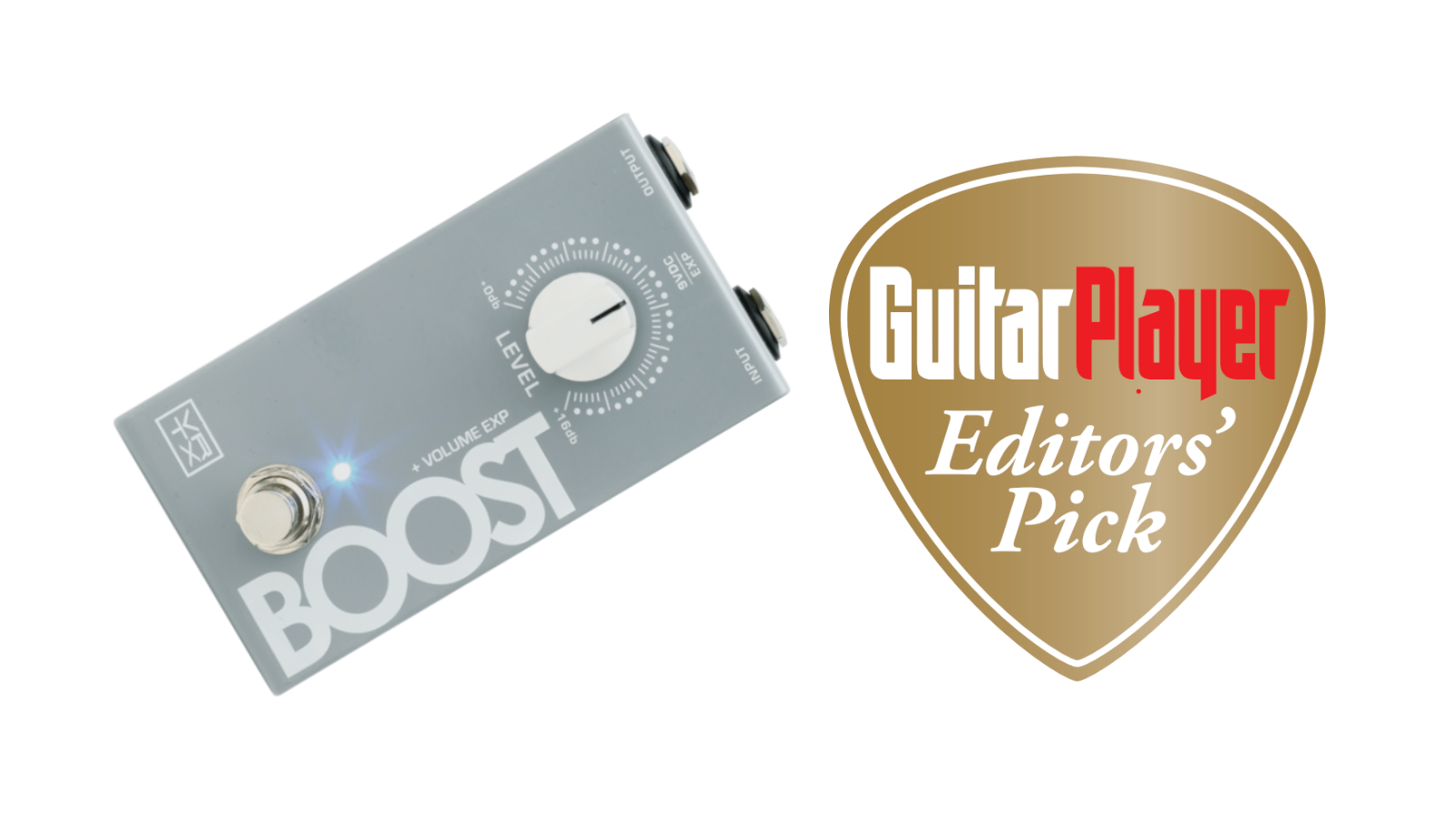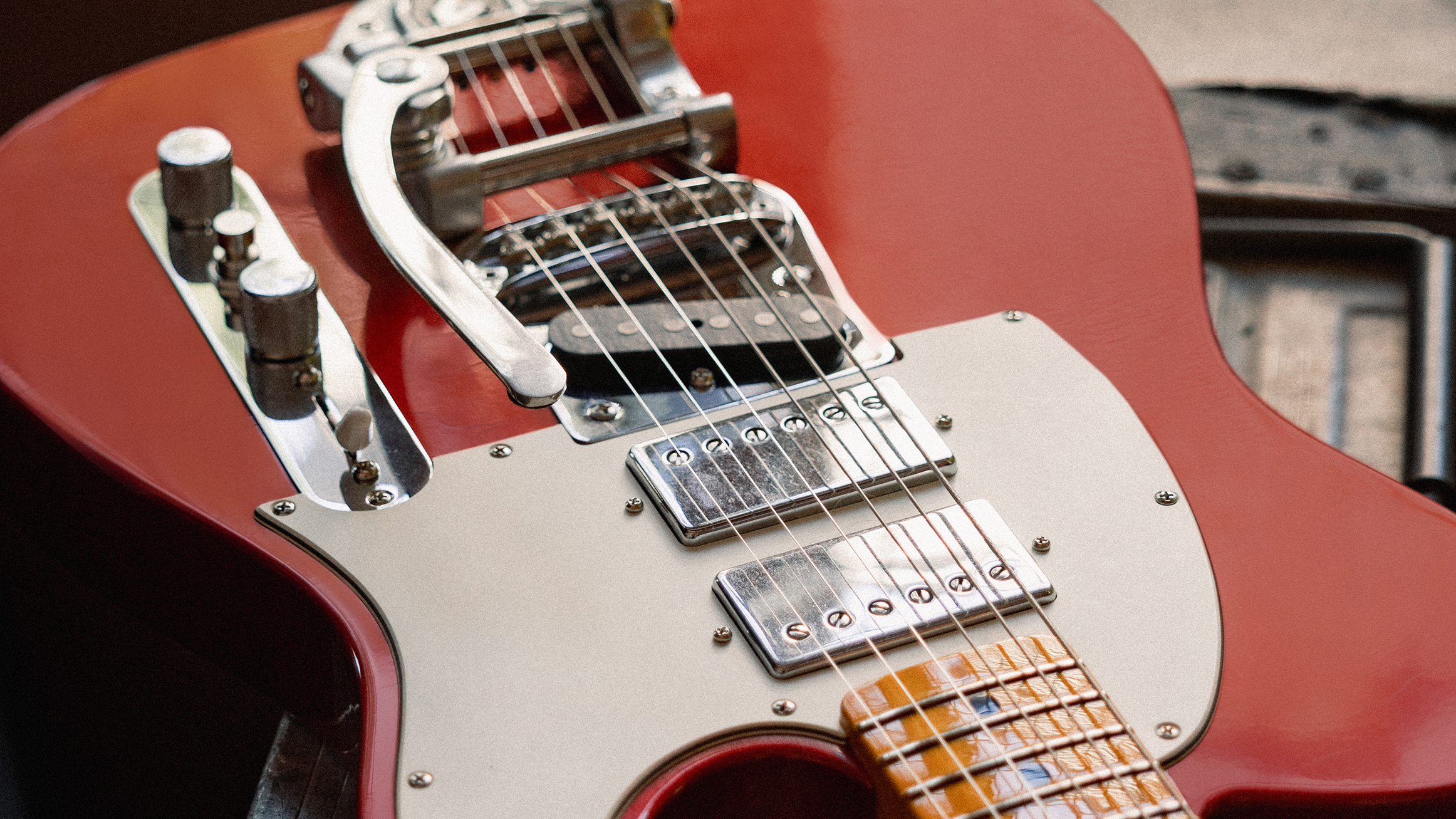GuitarPlayer Verdict
Recommended to any guitarist looking for a killer transparent boost, especially those seeking the ultimate expression
Pros
- +
Adds up to 16dB of pristine gain with tons of headroom
- +
Configure buffered effects loop for volume expression and other pedals
- +
Small footprint
Cons
- -
A bit pricey
- -
Not operable on battery power, and 9-volt DC adaptor sold separately
You can trust Guitar Player.
We all need a boost from time to time, and the Boost MKII from Vertex Effects is designed to deliver exactly that. This MKII update is a significantly slimmer version of one of the California company’s most popular pedals, reducing its footprint by more than a third while maintaining all the tone and functionality of the original.
The fact that it provides a totally transparent boost piqued my interest, but I was hooked when I learned Boost MKII can be controlled by the expression pedal of my choice, allowing me to ride the level like a gas pedal.
Anyone who plays a variety of instruments on a gig, and in a range of styles, can testify to the frustration of keeping rhythm volume consistent from guitar to guitar, and lead volumes appropriate from tune to tune, tone to tone.
I use a dual acoustic/electric rig to accommodate everything from a Strat to a Martin to a Les Paul, and play everything from funk to folk to rock via an array of piezo and magnetic pickups and two separate pedalboards. I’m constantly taking too much time at sound check and struggle all night to get the balance right. A clean boost that can be used as a master volume sounded to me like a godsend.
But if the sounds weren’t truly neutral and quiet, then the rest would be pointless. I have a graveyard of boost pedals that introduced too much noise, took up too much space or colored the sound too much. Good news: The Vertex Boost MKII is as clean as they come, with sky-high headroom, and it’s as quiet as a church mouse.
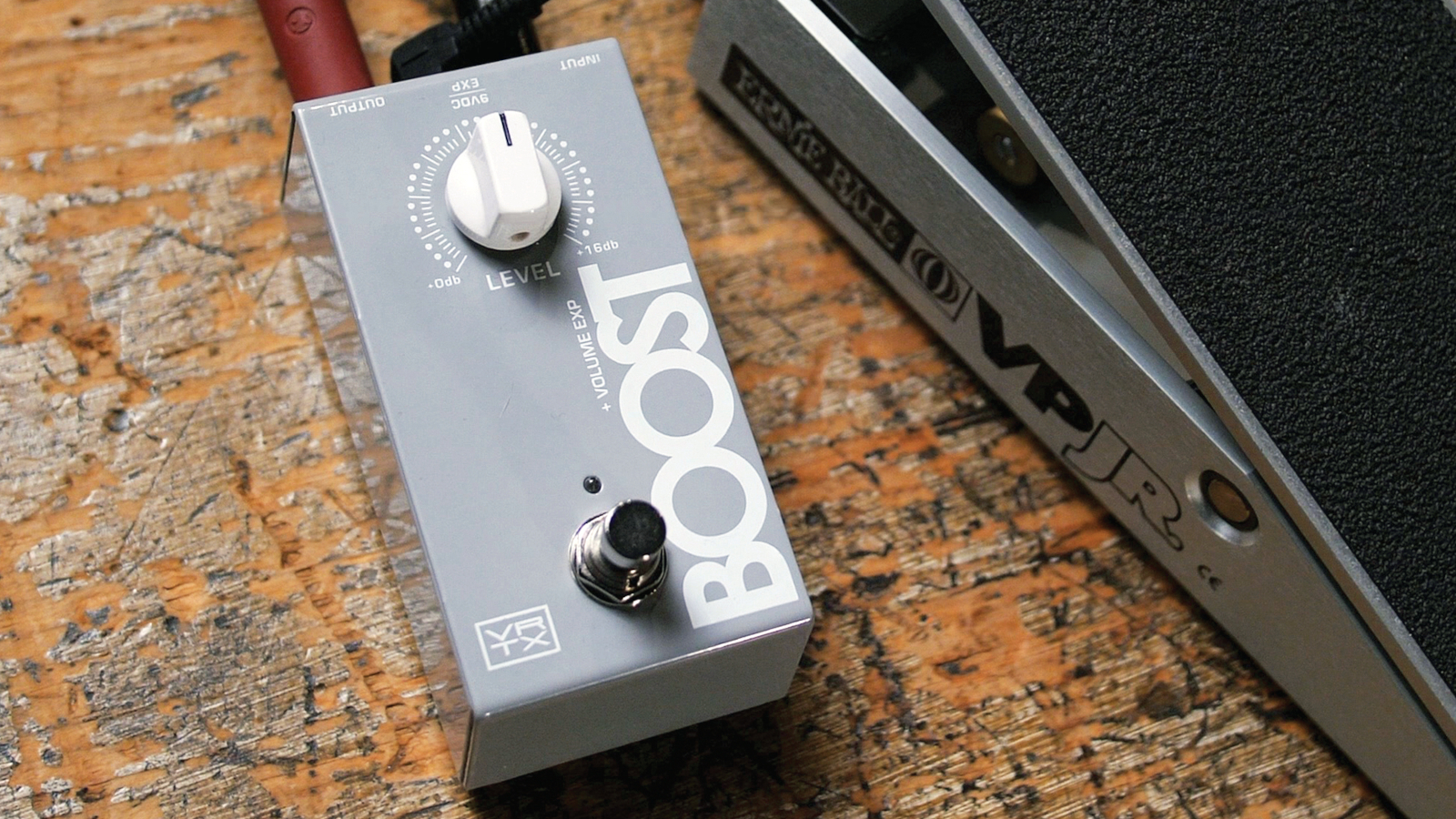
The pedal has one knob, and it’s set up very well. There’s no boost when the dial is turned far left, and absolutely no difference in the tone from the amp. I tested the pedal through a 1966 Fender Pro Reverb, an amp that can sound amazing but has no master volume. It’s anemic with the volume at three or under, becomes good at five and breaks up into a beast at eight.
The MKII’s dial delivers an 8dB boost when set at the noon position, and that was like bumping the amp’s volume from four to six. Crank the MKII to the maximum 16dB boost, and it takes that four all the way to eight, which is awesome for a searing lead.
I’d be interested if the story ended there, but that’s really just the start. Boost MKII has a buffered input and a buffered output as well as an insert, so no matter what kind of pedals you place before or after it, the sound remains the same.
And with the insert, you can create a buffered effects loop, including whichever pedals you choose, most importantly an expression pedal, which in this case was a Dunlop DVP4 Volume (X) Mini.
The insert is a 1/8-inch mini jack, so it requires a special cord. I found a Hosa Y-cable that has a central mini jack with two ¼-inch cords feeding off of it. I sent one into the volume pedal and the other out, and entered hallowed tonal territory. Everything from a slight volume bump to the most extreme boost was available just by rocking the pedal.
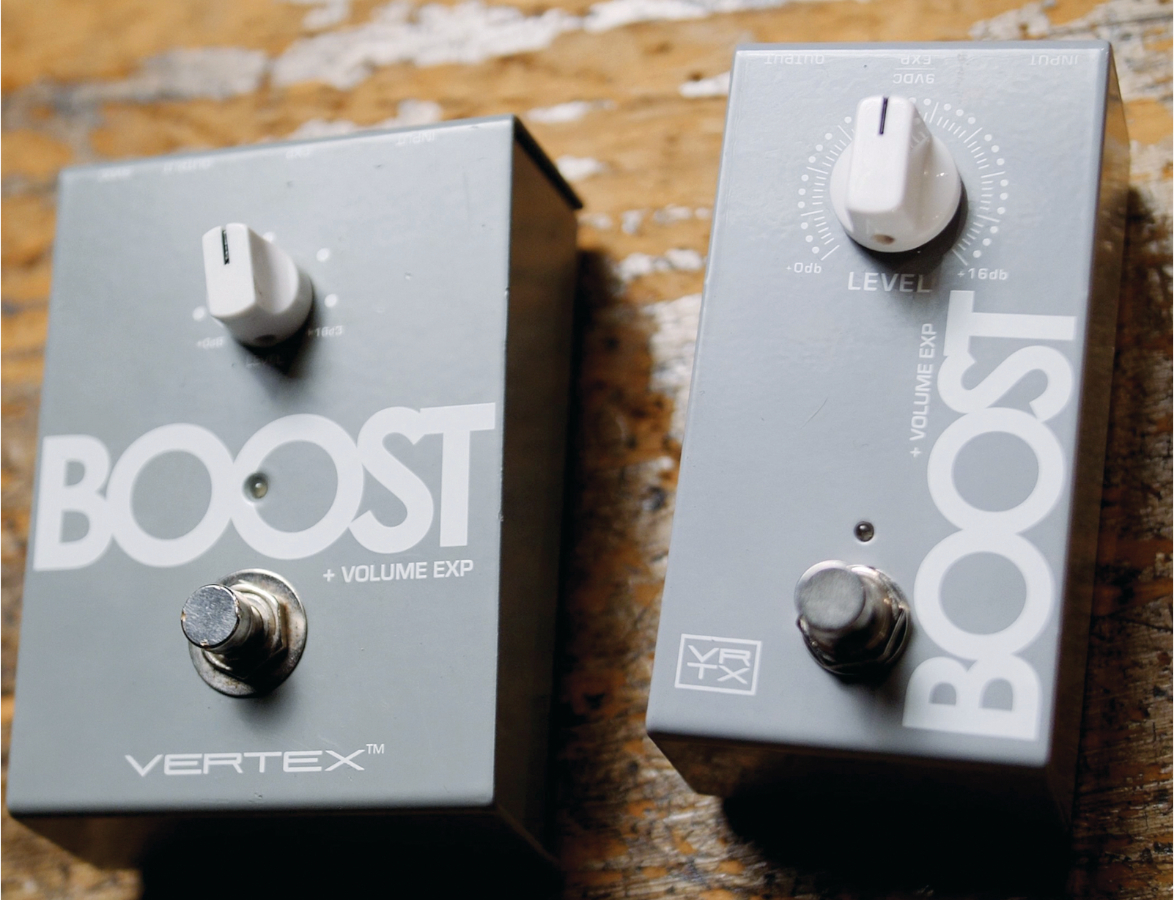
This setup let me ride the Pro Reverb’s volume from four to eight and all points in-between, yet it was actually cleaner, quieter and smoother sounding than doing it with the amp control.
Could you simply set the amp at eight and then use either the volume knob or volume pedal to attenuate. In theory, sure, but in reality that makes the noise level much higher and invites all sorts of other weird interference from radios and the like, as well as inconsistencies from guitar to guitar, all without the buffering that make the MKII play so friendly with other pedals on the board, including other gain pedals that you can choose to push as well.
It also feels better to be at more of a midpoint, with the ability to push or pull. The other method can feel like driving a car with the gas pedal floored and trying to hold it back with the brakes, and it always feels like something is lost tonally when attenuating. With the MKII, there’s a sense of addition. All sorts of notes, from melodic lead passages on the Strat to fingerpicked passages on the acoustic-electric, actually pop out better, even at lower volumes.
All sorts of notes, from melodic lead passages on the Strat to fingerpicked passages on the acoustic-electric, actually pop out better, even at lower volumes
As a guitarist who plays as much acoustic as electric, and as much rhythm as lead work, I found my Boost MKII–and-volume-pedal setup to be much more than a traditional boost or a means for maintaining sonic balance across instruments. It became an integral musical tool, handy for highlighting a delicate rhythmic element or swelling from a whisper to a screaming lead.
I do wish the Boost MKII could run on battery power to serve as a throw-and-go for any sit-in situation, but I understand that it’s operating internally at +12 volts/-12 volts, despite drawing just nine volts, so it needs all the juice it can get. And, at two bills, the MKII is a bit pricey for a little boost, but it’s the best I’ve found.
I recommend it to any guitarist looking for a killer transparent boost, especially those seeking the ultimate expression.
This powerful and flexible little booster comes to every gig from now on, and earns an Editors’ Pick Award.
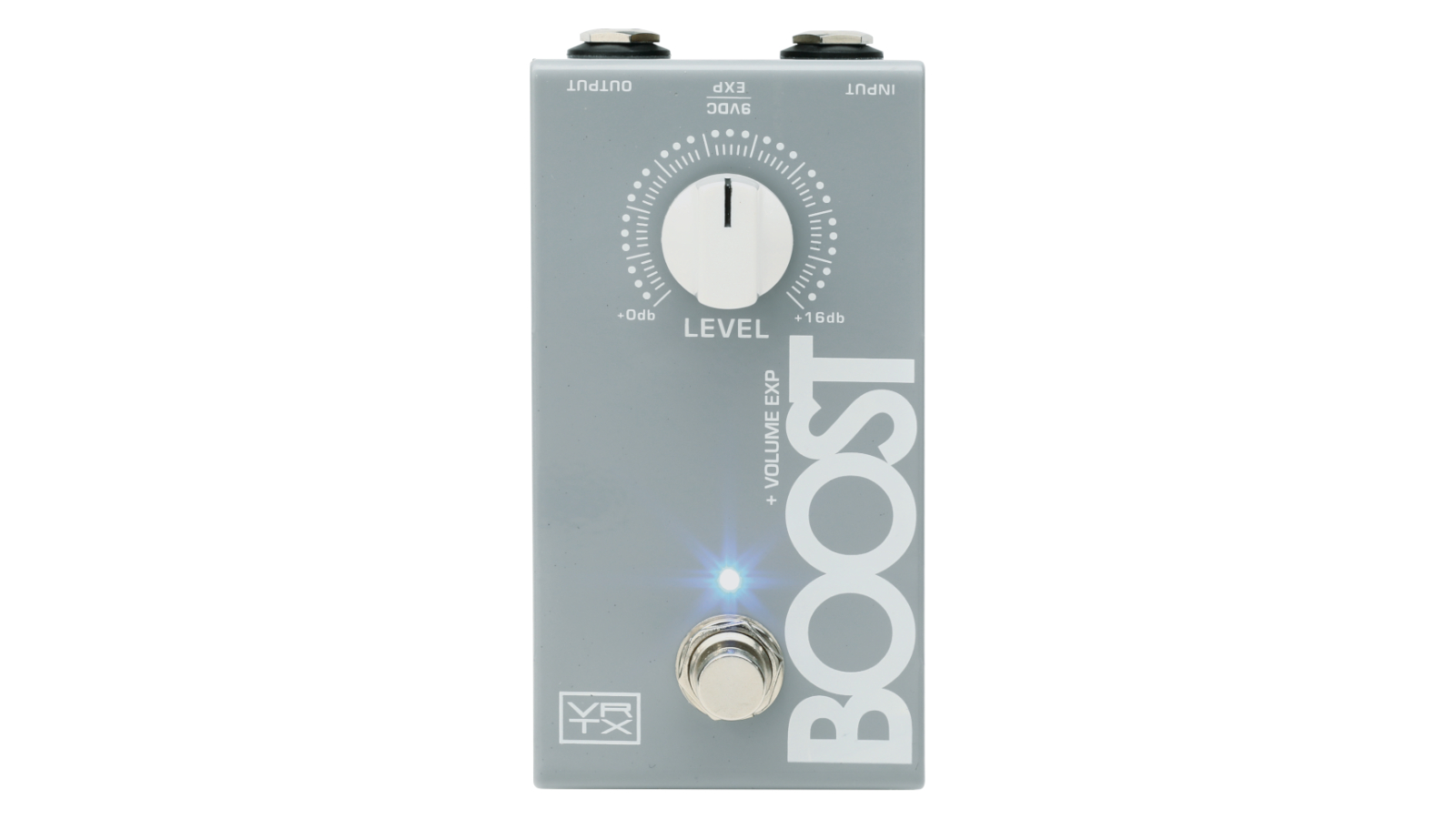
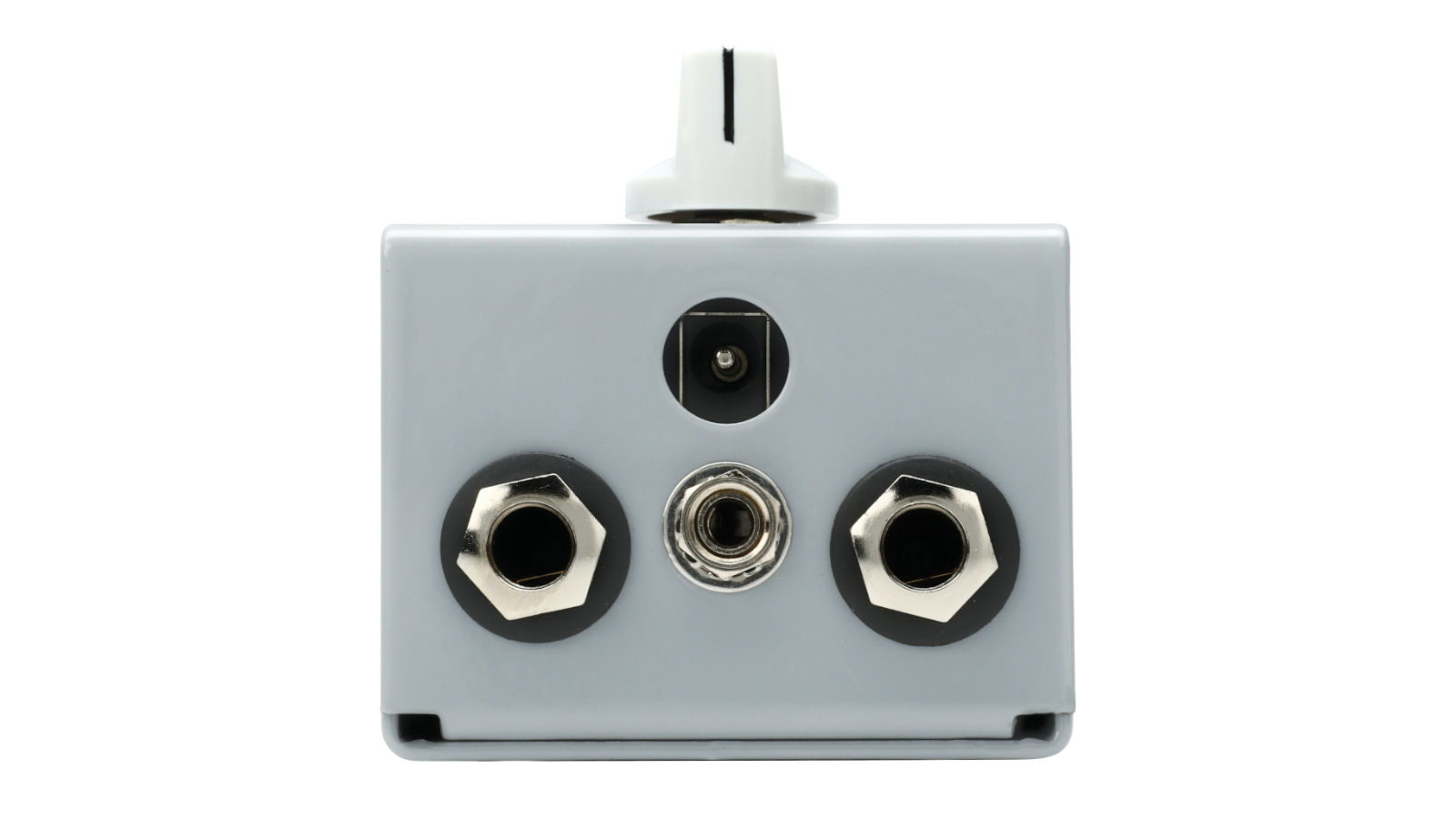
Specifications
- CONTROLS: Level from 0 to +16dB
- I/O: ¼” input, ¼” output, 1/8” mini-jack
Visit Vertex Effects for more information.
Jimmy Leslie has been Frets editor since 2016. See many Guitar Player- and Frets-related videos on his YouTube channel, and learn about his acoustic/electric rock group at spirithustler.com.
"The only thing missing is the noise from the tape loop." We review the Strymon EC-1 Single Head dTape Echo, a convincing take on a very special vintage tube Echoplex
"BigSky MX will be replacing the BigSky as my go-to reverb pedal. I’ve heard nothing that covers all the bases with such pristine and detailed audio quality." We crowned the Strymon BigSky MX the champ of multi-reverb pedals
